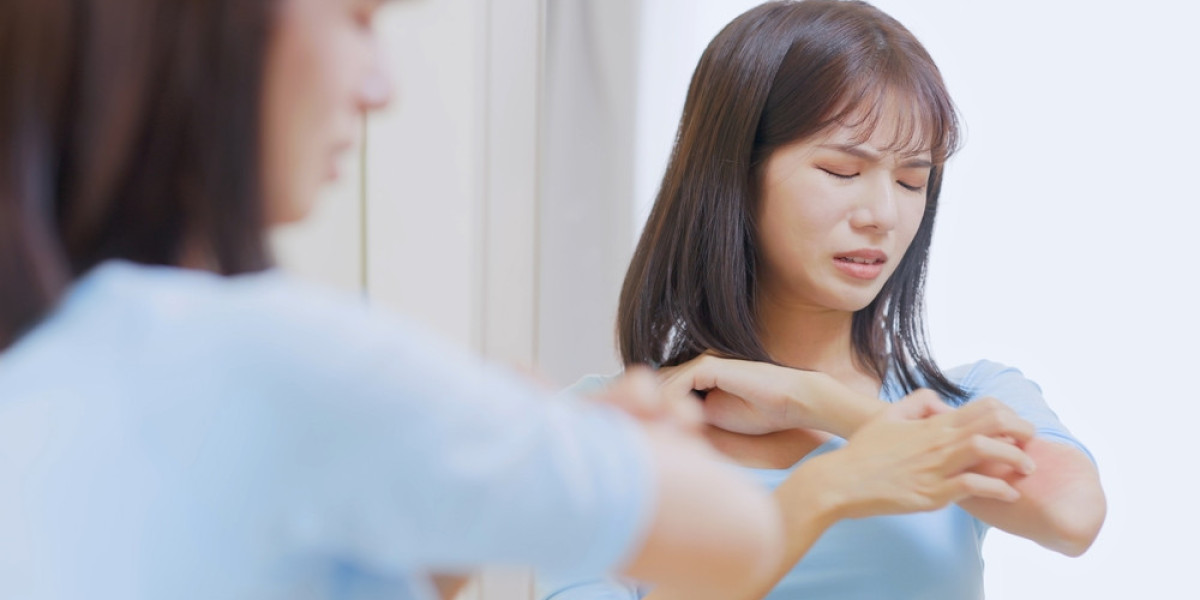Imagine it’s a beautiful day. You’re out enjoying life, feeling fabulous, and then out of nowhere, a wave of itchiness erupts on your skin. You look down, and suddenly, you’re dotted with red, raised welts. The itch that stole the show!
Welcome to the world of hives, also known as urticaria! These unpredictable welts can appear and disappear within hours, or sometimes linger for days, making you wonder what just happened.
This guide will help you understand hives, learn what triggers them, and most importantly, give you tried-and-true methods for coping with hives to help you get back to your routine, itch-free.
What are Hives and Why Do They Occur?
Hives, or urticaria, are raised, itchy patches on the skin that appear suddenly. They may look like small red spots, large blotches, or even giant rings, varying greatly in size and shape. Hives are most commonly caused by an allergic reaction, but they can also arise from unknown or multiple factors. The itchiness and irritation can quickly escalate, turning an ordinary day into an uncomfortable ordeal.
Hives can be acute (lasting less than six weeks) or chronic (lasting six weeks or longer). While acute hives are usually triggered by an allergen, chronic hives can persist without an identifiable cause, making them especially tricky to treat and manage.
Facts About Hives
To help demystify hives, here are a few key facts about hives:
Hives affect approximately 20% of people at some point in their lives, meaning you’re far from alone in experiencing them.
Women are more likely to suffer from hives than men, and stress can exacerbate symptoms.
Though they can occur at any age, hives are more prevalent in adults aged 20 to 40. Hives can appear anywhere on the body, including the face, neck, arms, legs, and torso. In some cases, they might even swell into a larger, raised patch.
Factors Contributing to Hives
Understanding the factors contributing to hives can give you insight into how to manage them effectively. Here are some common triggers:
Food Allergens: Certain foods, like shellfish, nuts, eggs, and dairy, are well-known triggers for hives.
Medications: Common drugs such as aspirin, ibuprofen, and certain antibiotics can lead to hives.
Environmental Triggers: Sunlight, cold temperatures, and even physical pressure from tight clothing can trigger hives.
Stress and Anxiety: Mental health and stress can play a surprisingly big role in hive flare-ups.
Infections: Viral infections like the common cold or flu often contribute to temporary hives, especially in children.
Recognizing and Coping with Hives
Coping with hives begins with recognizing the telltale symptoms: red, itchy, raised patches that may feel warm to the touch. Hives can vary in size and shape and often appear and fade unpredictably. They may emerge within minutes of exposure to a trigger or take hours to develop fully.
When hives persist for more than six weeks, they’re classified as chronic urticaria, a form of hives that can be more resistant to treatment. In such cases, seeing a doctor is essential to find the best strategies for coping with hives in the long term.
Mandatory Precautions for Coping with Hives
Preventing hives might sound challenging, but some precautions can help reduce flare-ups significantly:
Dietary Changes: Avoid foods that trigger hives. If you suspect certain foods, consult an allergist or try an elimination diet to confirm triggers.
Skin-Friendly Products: Opt for gentle, fragrance-free skincare and household products to avoid irritating sensitive skin.
Stay Cool: Heat can exacerbate hives, so keep cool. Avoid hot showers and opt for loose-fitting clothing.
Limit Alcohol and Caffeine: Both can trigger and worsen hives in some people.
Monitor Stress Levels: Relaxation techniques, such as deep breathing, yoga, or meditation, can help reduce stress-related hives.
Effective Treatment Options for Persistent Hives
For individuals suffering from chronic hives, seeking potential life-changing hives treatments may be necessary.
Antihistamines:
Often the first line of defense for most cases.
Help reduce histamine, the main chemical responsible for hives.
Non-drowsy antihistamines can be taken daily for ongoing relief.
Corticosteroids:
Suitable for short-term relief in severe cases.
Can effectively reduce symptoms but may lead to side effects if used long-term.
Omalizumab (Monoclonal Antibody Injection):
Highly effective for chronic, idiopathic (cause unknown) hives.
Provides lasting relief when other treatments have failed.
Recommended for severe cases under medical supervision.
Consultation with a Healthcare Provider:
Essential to explore personalized treatment options.
Professionals can assess your condition and recommend the best course of action.
Practical Tips for Coping with Hives
Living with hives








